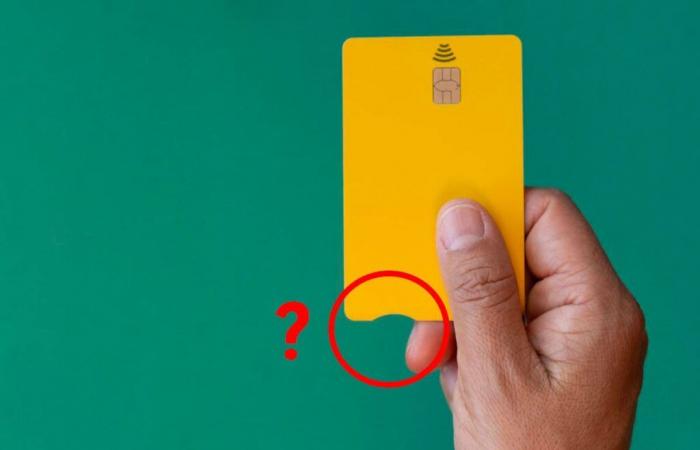The constant evolution of banking technologies brings new functionalities to payment cards. Among these innovations, thenotch on new bank cards arouses curiosity. Let's discover together its usefulness and its impact on the user experience.
A discreet innovation in the service of accessibility
L’Notch on bank cards is not just an aesthetic detail. This small notch, located on the side opposite the chip, is actually a functionality designed for visually impaired people. It makes it easy to distinguish the bank card from other cards in a similar format and to identify the correct direction of insertion into payment terminals.
This innovation, initially launched in the United Kingdom in 2015 by the banks NatWest and RBS, in collaboration with the Royal National Institute of Blind People (RNIB), has gradually spread across Europe. Its adoption reflects a growing desire to include people with visual disabilities in the use of banking services.
Here are the main advantages of the notch:
- Quick identification of the bank card
- Correct orientation for insertion into terminals
- Distinction between credit, debit and prepaid cards
- Improving the autonomy of visually impaired people
The bank card, the star of payment methods in France
The addition of this notch is part of a context where the bank card reigns supreme in transactions. In France, its use greatly exceeds that of cash, with 94% of in-store payments made by cardaccording to an OpinionWay study. This figure even surpasses the European average which stands at 87%.
Contactless payment is also experiencing rapid growth, representing more than half of card transactions. This trend reflects the French people's attachment to this practical and secure means of payment. Banks, aware of this craze, are competing in ingenuity to offer innovative bank cards adapted to the needs of all users.
Persistent challenges to full accessibility
Despite this progress, obstacles remain for visually impaired people in using payment methods. The composition of the secret code on touch terminals remains problematic, pushing some to favor online purchases. To overcome these difficulties, various solutions are emerging:
| Solution | Advantage | Limitation |
|---|---|---|
| Contactless payment | Speed and ease of use | Limited amount |
| Payment apps (Apple Pay, Google Pay) | Biometric security | Requires compatible smartphone |
| Fingerprint cards | No amount limit | Uncommon technology |
| Voice bank card | Auditory confirmation of transactions | Requires a dedicated app |
The voice bank carddeveloped by the French company Thales, represents a significant step forward. Linked to a mobile application, it allows users to hear the amount of their purchases and receive voice confirmation of transactions, thus providing increased autonomy for visually impaired people.
Towards a bank card revolution
The notch is just the tip of the iceberg in the transformation of bank cards. Mastercard, with its Touch Cardtakes the concept further by offering different notches depending on the type of card: rounded for credit, square for debit, and triangular for prepaid cards.
This development is part of a broader approach aimed at making financial services accessible to all. Innovations such as fingerprint cards or voice cards demonstrate this desire for inclusion. They pave the way for a new era where banking technology adapts to the specific needs of each user, whether visually impaired or not.
The future of bank cards is taking shape around key concepts:
- Increased customization
- Integration of biometric technologies
- Connectivity with mobile devices
- Strengthening transaction security
These innovations promise to radically transform our relationship with payments, making the banking experience more intuitive, secure and accessible to all user profiles.






